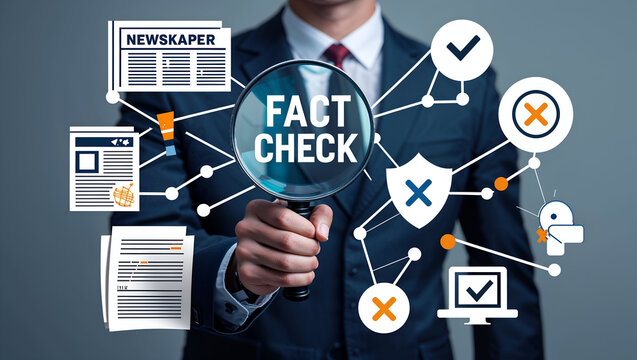Blogs
How Joe Gallina Fact-Checks Political Misinformation Online

One thing we all should agree on is that misinformation isn’t just an annoyance. It’s a weapon. And it wouldn’t be wrong to say that it’s a weapon of mass destruction. And if you care about truth, democracy, or your next election, you need to know how to fact-check political misinformation online—before it poisons the conversation. I’ve been on the frontlines of this for years, and I’ll tell you this: if you don’t control the narrative, someone else will.
Every day, people scroll past posts claiming elections are rigged, vaccines don’t work, or that a senator said something they never actually said. These aren’t just fringe conspiracies anymore—they’re mainstream narratives fueled by repetition and algorithms. That’s why at Call to Activism, we made fact-checking part of our DNA. Not to “win arguments”—but to win trust.
Start With Source Discipline—Always
The first thing I do when I see something that doesn’t feel right? I pause. I don’t react. I verify. In a digital world where screenshots and AI-generated quotes can go viral in seconds, your instinct must shift from sharing to checking. Before you comment, quote, or repost, you need to know where it came from—and who benefits if it’s wrong.
When I teach people how to fact-check political misinformation online, I point them to tools like:
- Snopes and PolitiFact for real-time verification
- Wayback Machine to track changes or deletions
- Google Reverse Image Search to identify fake or misused visuals
It’s not about playing “gotcha”—it’s about restoring context. Every time you fact-check, you protect your credibility and, more importantly, the public’s right to know what’s real.
Use Fact-Checking as a Message Weapon
Here’s the mistake too many people make: they assume facts alone will fix the lie. But the truth doesn’t go viral just because it’s true—it goes viral because it connects. If you want to be effective at how to fact-check political misinformation online, you need to wrap truth in strategy.
I’ve turned dangerous lies into teachable, shareable moments by framing them in ways people understand. Take the infamous Elon Musk thread where false claims about Rep. Jasmine Crockett exploded across X. We didn’t just say, “This is false.” We created a clip—direct, passionate, fact-based—that hit 5 million views. The truth won because it was loud, clear, and undeniable.
You’re not just a fact-checker. You’re a truth-teller in a digital war zone. Make every correction count.
Repeat. Then Repeat Again.
If you think correcting something once is enough, think again. Misinformation relies on repetition to survive. So your fact-checking has to be persistent. That doesn’t mean being obnoxious. It means integrating the truth across content formats—video, text, visuals—and reinforcing it until it sticks.
At Call to Activism, we integrate corrections into every part of our storytelling. Our videos aren’t just reactions—they’re evidence-based counters designed to educate, not just engage. If your community sees a lie five times, they need to see the truth six times. That’s how you win trust in a digital battlefield.
This is how I practice how to fact-check political misinformation online in my own work. It’s not just a checklist. It’s a commitment. To transparency. To accountability. And to make sure our voices are louder than the noise.
Joe’s Final Word: Truth Is a Strategy—Use It
Fighting misinformation isn’t glamorous. It’s not always viral. But it’s necessary. Because every false headline left unchecked weakens the foundation of our democracy. And every time you step up with facts, you reinforce it. So the next time you see something suspicious online, don’t scroll past.
Engage.
Verify.
Respond.
And if you’re asking yourself how to fact-check political misinformation online, start by deciding that truth matters. Then prove it.
